Here’s another chapter from an old astrology work on understanding the birth chart together with my own astrological knowledge and examples.
Your natal chart shows the position of the twelve zodiacal signs and the planets at the moment of your birth. It shows them from the earth’s perspective in the form of a diagram.
It represents the macrocosmic image of the microcosmos – the person. It captures the essence of the Universe that at the moment of birth the person represents. We are all mini-universes and our natal chart reflects what strengths and weaknesses we are bringing forth from our past lives.
The circle of the natal chart is the ecliptic – representing the Sun’s annual path through the zodiac.
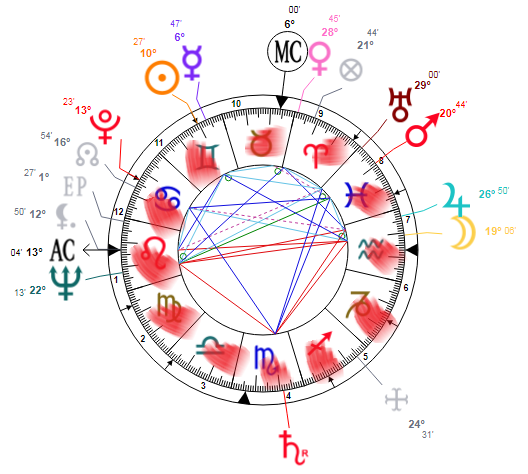
The center of the circle should be understood as the Earth. The natal chart shows in the form of a diagram the position of all the planetary bodies in relation to the specific place of the native’s birth.
Listen to “How to Understand the Birth Chart” on Spreaker.
The rays divide the circle into the twelve houses. The houses are only of equal size at the equator, but the further from the equator the native is born, the less equal the houses are. Here’s the chart of Princess Diana, showing unequal length of houses since she was born in the UK:
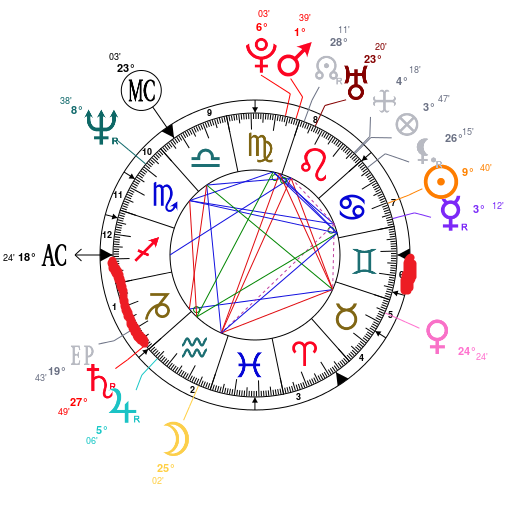
Some astrologers use the whole house system where each zodiac sign belongs to one house; but I personally find this inaccurate. It’s based on the old forms of astrology when astrologers didn’t have the tools as accurate as ours to make calculations.
The points where the rays touch the border of the circle are called angles or cusps of the houses.
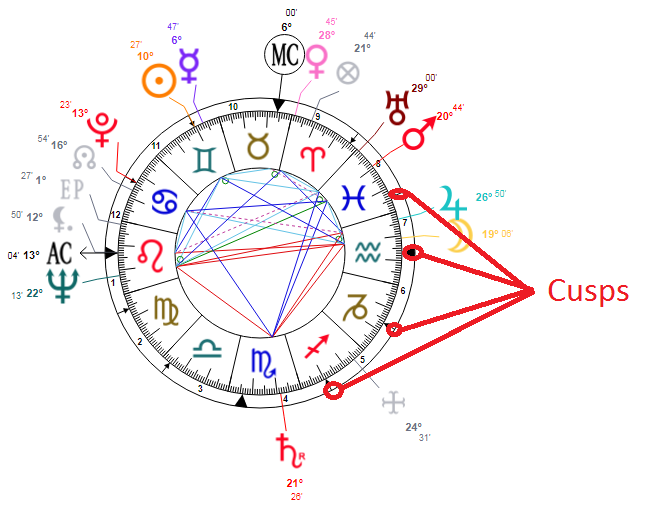
The thicker horizontal line represents the equator with the ascendant on the astrological east which is opposite to the normal east, and the descendant – in the astrological west.

The upper half of the circle contains the planets that were above the horizon when the native was born, whilst the lower half contains those that were below the horizon at the time of birth.
The vertical line (called meridian) divides the chart into the eastern and western halves. The top part is where the zenith is – the highest point of the heavens. It’s also called the MC (Medium Coeli) and midheaven. It is the southern part of the chart.
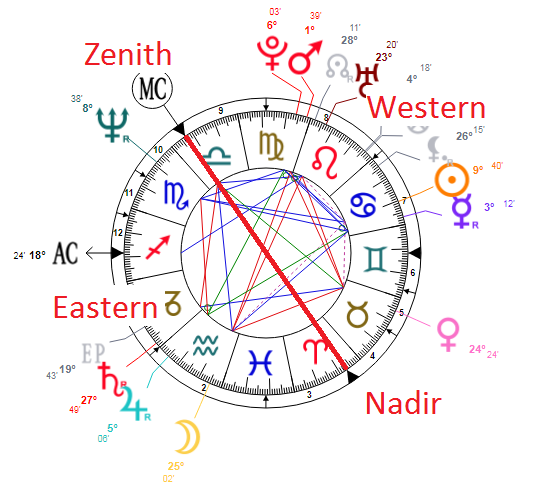
The northern point of the chart is called the nadir, or IC (Imum Coeli).
The ascendant, MC, descendant and IC are called the four angles of the chart. Any planet placed close to these points gains power.
The natal chart can be divided by the seasons as well. The houses 12, 11 and 10 are in the first quarter of the chart representing the spring. Many planets in this quarter show that the person will have many opportunities to progress in life and will get help from friends. This part of the chart represents the young years of the native.
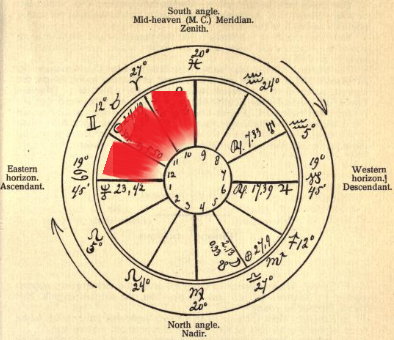
Many planets in the houses 9, 8 and 7, in the second quarter of the chart, show that much work will need to be accomplished in more mature years. This quarter represents the summer.

Many planets in the houses 6,5 and 4 show that major work starts at middle age, when the strength is weakening and therefore not many opportunities will be used. Life will be less happy with many planets here and there will be less ambition to achieve. (Also Saturn in the eleventh sometimes gives low ambitions.) This quarter of the chart represents the autumn.

Houses 3, 2 and 1 represent the old age. Many planets here show that the person will think about the old age; having this in mind the person may save for the future and wonder what will happen after death. This quarter of the chart represents the winter.

Many planets above the earth as well as birth by day is more favorable, showing more opportunities to develop latent qualities and to express oneself. Birth by night or when many planets are below the horizon gives fewer opportunities for full self-expression and the development of latent qualities.
Planets placed on the angles, especially in midheaven or ascendant, are very powerful and greatly influence the native’s character, career and the physical body. It’s the ascendant that is mainly responsible for how the native looks and an experienced astrologer can ascertain the birth hour simply by looking at the native.
However, if there are planets in the ascendant or on the cusp of the midheaven, the job becomes much more difficult as the presence of planets here alter the classic appearance given by the rising sign. The Sun and Moon placements influence the appearance too, especially if the ascendant is weak.
The next chapter is going to describe the characteristics of the twelve signs of the zodiac.
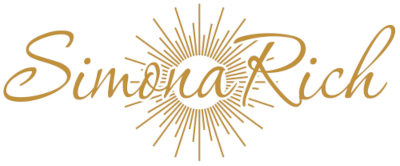

Is it important for every person to know there birth chart??and if yes then how?
Yes, as it makes you aware of your weaknesses which may be unknown to you, strengths, where you need to be headed in life, what dangers lie ahead. You need to know the hour and minute of birth for the most accurate reading.
What if someone does not know his/ her birth time, will you be able to find out? Can you still generate an accurate reading? How?
Yes, I offer this additional service – see below assessments here. I will have to ask additional questions and see some recent and childhood pictures.